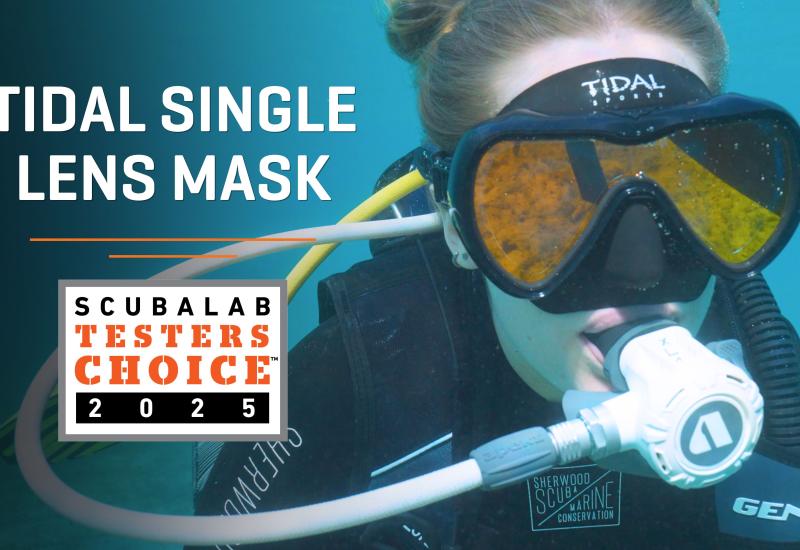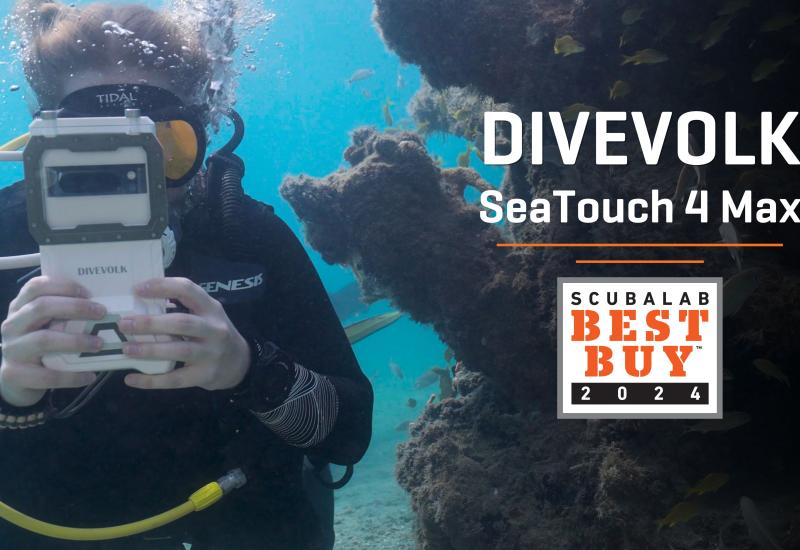Scuba Diving Computers: Behind-The-Scenes Photos of ScubaLab's Gear Review

John Michael BullockBehind-the-scenes of ScubaLab test
Would You Look At The Time?
It's time to peek behind-the-scenes as ScubaLab test the latest dive computers for the 2016 review.
In May, ScubaLab was busy testing dive computers for Scuba Diving's September/ October Issue. For the 2016 dive computer review we put the latest computers through objective tests and in-water evaluations. Enjoy these behind-the-scenes photos of our ScubaLab test team!
In-Water Ergonomics Test
When we test the latest dive gear, an essential part of the process is diving with it. Our test divers took the newest dive computers underwater at Blue Grotto Dive Resort in Williston, Florida to provide insight of how they performed in the field. Testers were asked to evaluate computers on a number of subjective criteria such as how easy the displays were to read above and below the surface, how well the audible alarms performed and how intuitive and user-friendly the menus were.

John Michael BullockScubaLab dive computer gear test.
More Computers Than You Can Shake A Stick At
Unless you put them all on one stick. We attached all 8 wrist-mount dive computers to a pvc pipe in order to do a side-by-side comparison of their displays underwater.

John Michael BullockScubaLab dive computer test underwater photo Oceanic VTX
A Thing of Beauty
Test divers were also asked to write down any other observations they had outside of our test criteria — such as if a computer's design really caught their eye.
What Testers Liked
Testers evaluate computers in multiple categories designed to gauge performance with a focus on ease of use and intuitiveness of operation. They rated scores on a scale from 5 (excellent) to 1 (poor). Testers were also asked to provide any additional comments they had while using the computers. The following are a few features that came up in testers' notes again and again.
Practical compasses: The latest computer compasses — like that on the Oceanic VTX — are a snap to calibrate and use. And comparisons of their readings against a high-quality analog compass also found that they’re more accurate than in the past.
Graphic logs: Computers collect gobs of data on your dives; graphic logs — such as on the Suunto Vyper Novo — help you visualize your dive profiles at a glance.
User-replaceable batteries: The ability to swap your own battery — as on the Aqua Lung i300 — saves time and money. Be sure to follow instructions for servicing the O-ring and resealing the case; if in doubt, get your dive shop to do it.

John Michael BullockScubaLab dive computer test diver underwater.
Safety Stop
Deputy Editor Mary Frances Emmons inspects the display as the dive computer counts down its safety stop.

John Michael BullockScubaLab dive computer test Scubapro Mantis
Running Computer Models
We tested various dive computers including; consoles, wrist-mounted and air-integrated models.

John Michael BullockScubaLab dive computer test diver and freshwater fish.
Testing With The Fishes
Assistant Editor, Robby Myers, draws some spectators while evaluating dive computers. ScubaLab disclaimer: no animals were utilized in product testing.

John Michael BullockScubaLab dive computer test Blue Grotto underwater photo.
Time Flies When Your Testing
Test divers spent the day scuba diving with the test dive computers at Blue Grotto.

John Michael BullockScubaLab testing dive computers at Blue Grotto
How Does It Compute?
Each computer is evaluated on criteria such as ease of reading the display, performance of the safety stop, ease of use and the performance of audible warnings.

John Michael BullockScubaLab dive computer test
Reading Rainbow
As part of our test we took into account the usefulness of the computers' quick-start guides and how easy they were to understand.

John Michael BullockScubaLab dive computer test
It's All In The Wrist (Mounted Computers)
ScubaLab Director, Roger Roy, inspects the test computers he will be diving with before entering the water.

John Michael BullockScubaLab dive computer test Blue Grotto
Test Dive
ScubaLab Director, Roger Roy, prepares to dive at Blue Grotto for the 2016 dive computer test.

John Michael BullockTesting dive computers at Blue Grotto with ScubaLab
Synchronize Watches
Assistant Editor, Robby Myers, also gears up in order to test dive computers underwater at Blue Grotto.
Objective Testing
To collective objective data on the latest dive computers we traveled brought them to USC's Catalina Island Hyperbaric Chamber on Catalina Island in California. We ran all 11 computers simultaneously through 4 simulated dive profiles. By comparing the no-decompression limits after repetitive dives we could gauge the computers algorithms as being more conservative or liberal.

Robby MyersUSC Hyperbaric Chamber on Catalina Island
Pressure Test
Computers were subjected to simulated dive profiles in the USC Catalina Hyperbaric Chamber.
So which algorithm is safest?
No-deco times matter, but the most important factor to avoid getting bent might be less about algorithms and more about common sense. You can increase your safety margin by employing your computer’s safety factors during demanding diving, staying well out of deco, lengthening safety stops, and honestly assessing personal risk factors like dehydration, illness and overall physical condition.
It's also a good idea to read your computer's manual so you don't misunderstand the information and instructions it will display in case of an emergency.

Robby MyersTesting dive computers in the Catalina Hyperbaric Chamber.
Inside the Black Box
The latest dive computers sitting inside the Catalina Hyperbaric Chamber.










